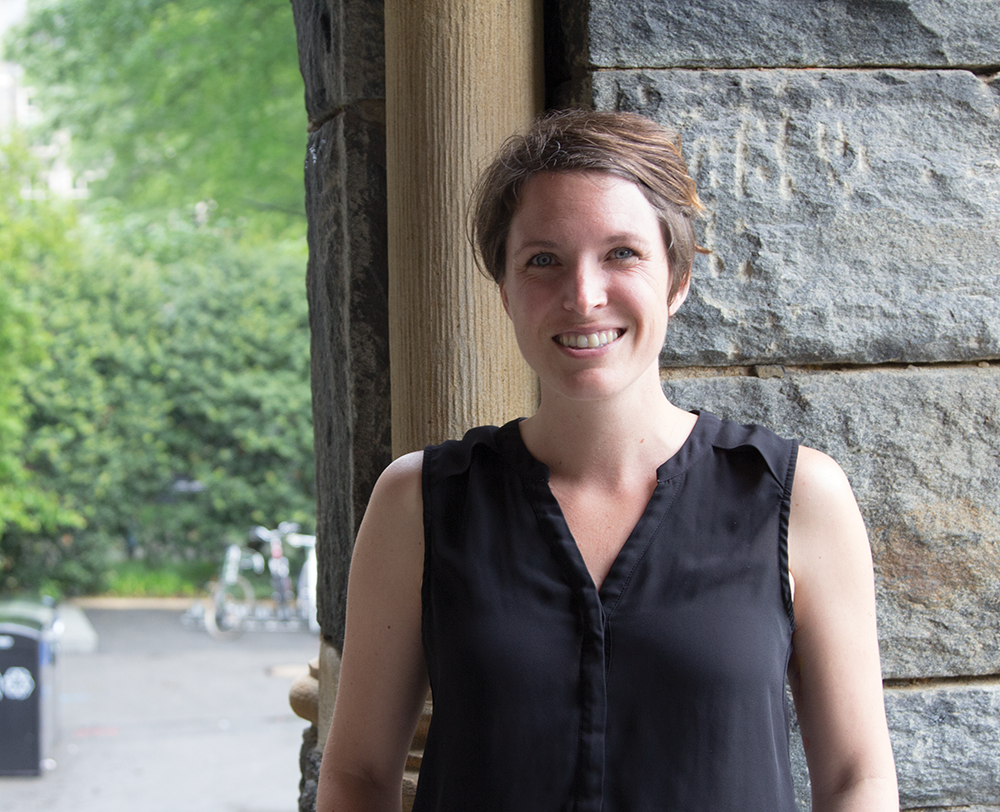I have been a graduate student at Georgetown University for nearly a decade. In 2009 I started a two-year master’s degree in Arab studies, and I am graduating this spring with a doctorate in Middle Eastern history after an academic career on the Hilltop that included four semesters as a teaching assistant and one summer teaching my own course. In essence, I’ve spent my entire adult life at Georgetown: I got engaged, got married and gave birth to my daughter while I was a full-time student.
In my time here, I have seen Georgetown’s vibrant community flow from the synergy of its three main bodies — graduate students, undergraduate students and faculty members — working together to sharpen one another intellectually, to care for each other holistically and to engage with the world with more sensitivity drawn from the diversity of our vast and varied experiences.
Georgetown was, first and foremost, an intellectual training ground. The other graduate students in my cohort and I pushed ourselves to master the craft of our academic discipline. I survived the yearlong process of qualifying exams for my doctorate, an experience so grueling that I wept in bed for days after it was all over. I spent long weeks away from my family conducting research in Iraq, Greece, France and the United Kingdom. I wrote the final chapters of my dissertation two months after giving birth to my daughter, still reeling from the physical and emotional havoc of childbirth.
Despite the challenges, I cherish the professional training I received here. Through intellectual exchanges inside and outside the classroom and mentorship by dedicated faculty members, I learned how to think more critically and to express my arguments lucidly. I look back with pride — and only a little wincing — at the personal and academic growth that took place at Georgetown, and I am full of gratitude for the faculty and students who were part of that journey.
But being a graduate student is not just about individual development: Teaching and mentoring younger students is an important role we play in the wider university community. Working as a teaching assistant in undergraduate history classes and teaching my own Middle East history course constitute some of my most cherished memories at Georgetown.
As TAs and graduate instructors, our familiarity with the struggles of student life means that we are often the ones best positioned to identify a student in crisis or to help professors and students better understand one another. Students come to our office hours for help with class but also to relay their fears and hopes about careers, life after graduation, personal dilemmas and academic pressures. Knowing the centrality of graduate students in undergraduate education, I am heartened by the work done by the Georgetown Alliance of Graduate Employees to make sure that the university fairly recognizes the contributions of graduate instructors.
This growing tradition of student activism is further proof of the vitality of Georgetown’s community. Over the past nine years, the world around Georgetown has changed in startling ways, and students have helped ensure that Georgetown evolves along with it. In 2012, a Georgetown University Law Center student was at the center of national debates about insurance coverage for contraceptives prior to the passing of the Affordable Care Act. In 2015, students led a sit-in to push Georgetown officials to take hard action in recognition of the 1838 sale of 272 enslaved people to fund the university. Today, the #MeToo movement and the threatened rights of immigrants and refugees are at the center of many campus discussions.
Faculty members have been important partners in supporting these students’ efforts. In my own department, history professors and graduate students are working together to maintain the Georgetown Slavery Archive related to the 1838 sale. This example — just one among many — illustrates the dynamism that can be achieved when undergraduates, graduate students and faculty work together on issues of significance for our campus and larger society.
After a decade of personal growth, intellectual training and cultural and political change, I am struck by the vitality of this community and the power of its student body. As students are becoming more actively engaged in issues of social, economic and political importance, I have no doubt Georgetown will continue to grow in embodying its values in academic excellence, cura personalis and social justice.
As I leave Georgetown to begin a new chapter as a professor at Seattle Pacific University, I carry with me our community values, convinced that campuses function at their best when students and faculty work together to bring about needed change.
Alissa Walter is a seventh-year doctoral student in Middle Eastern history.








